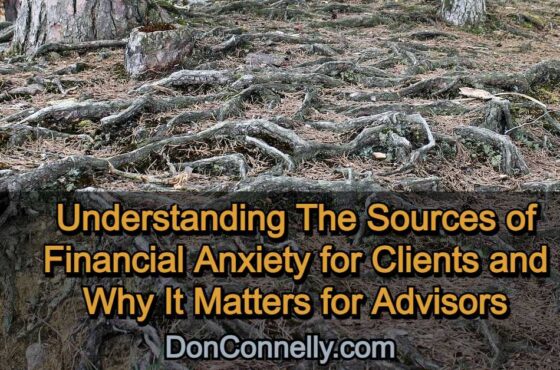What Advisors Need to Do to Help Set Client Goals
 According to a Morningstar study, what clients want most from their financial advisors is to help them reach their financial goals. That should be good news for financial advisors because, generally, people with clearly defined goals and ambitions for the future have the conviction to adhere to a long-term plan to achieve them.
According to a Morningstar study, what clients want most from their financial advisors is to help them reach their financial goals. That should be good news for financial advisors because, generally, people with clearly defined goals and ambitions for the future have the conviction to adhere to a long-term plan to achieve them.
However, it could also spell disaster for advisors who fall short in helping their clients articulate their most important goals and fail to gain their commitment to achieving them. To inspire action, client goals must be well-defined and quantifiable with genuine intrinsic value. Anything less is a hopeful aspiration, and hope is not a strategy.
Helping clients understand their goals
Advisors have plenty of tools to help them quantify client goals, utilizing assumptions and calculations to set the target, so their clients know where and how high to aim. But does simply knowing the number inspire clients to action? If your clients have no emotional connection to their goals, will they have conviction in your strategy for achieving them, or will they abandon it as soon as things go south?
If clients hire us to help them achieve their goals, we must be able to help them pinpoint those goals, focusing on their importance in realizing their ambitions of a good life today and for the rest of their lives. What are those ambitions? Why are they important? What would it look like? What would having that mean to you and your family? How would you feel if you fell short? The answers to those questions will reveal your client’s true motivations and intent. That’s what your clients are buying.
Steps to unleashing your clients’ emotional connectors
Before starting the process of defining specific goals, it helps to stimulate your clients’ thinking by starting more broadly and then drilling down. Asking a question like, “What does having wealth mean to you?” will get them to talk about their dreams and ambitions. More importantly, it should reveal critical insights into your clients’ values, beliefs, and attitudes about money. Those are the emotional connectors and motivating factors that guide your clients’ decisions.
To help move your client in that direction, you can ask a more specific follow-up question: “What does having wealth mean to you in terms of your beliefs and attitudes regarding family, health, security, and service to others?”
Draw out their answers with some variation of “Tell me more…” or “That’s interesting, I’d like to hear more about that.” That not only unleashes deeper insights into your client’s thinking but also deepens your engagement with them and strengthens your personal connection.
Follow up your client’s answers with, “Why is that important to you?” or “What would having that mean to you?” You’re looking for more emotional connectors and motivating factors.
Rinse and repeat that line of questioning until you sense your client has disclosed their most important priorities.
After thanking them for their openness in sharing their thoughts, play back what you heard—not just what is important to them but also why it’s important. Playing back the “what” shows you were listening to them but emphasizing the “why” shows you understand them. That solidifies the personal connection and reaffirms why they chose to work with you.
As you proceed with building your client’s strategy, it’s vital to keep the emotional connectors elevated in all your discussions. Always lead with the “why” because that elicits feelings about their goals, and clients are more likely to act on their feelings than their thoughts.
Differentiating yourself with an invaluable client experience
The client goal-setting process is critical. Done right, it should form the basis of an advisory relationship. Clients hire you to help them achieve their goals. But they need your help in defining them. That’s what any good advisor does. However, the most influential advisors—the ones who really differentiate themselves—are able to lead their clients down a path they’ve likely never traveled—a path of profound self-discovery.
Clients want to know where and how high to aim, but they also want to know how it will feel when they hit the target. That’s what motivates them to take action, and that’s where they find the conviction to adhere to your strategy.
Watch this 3-minute video to learn how our 24-step training program ‘Become Brilliant at the Basics’ will help you differentiate yourself, among other things.
See program details and enroll today!
Available as a self-paced program (always open) or as a 12-week coaching program (open only a few times a year), this training will change the way you view your practice and will give you an enormous advantage over your competition. Enroll today!



